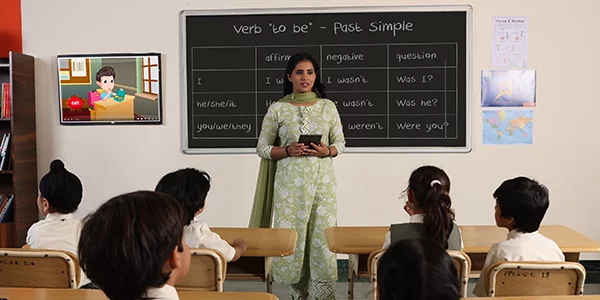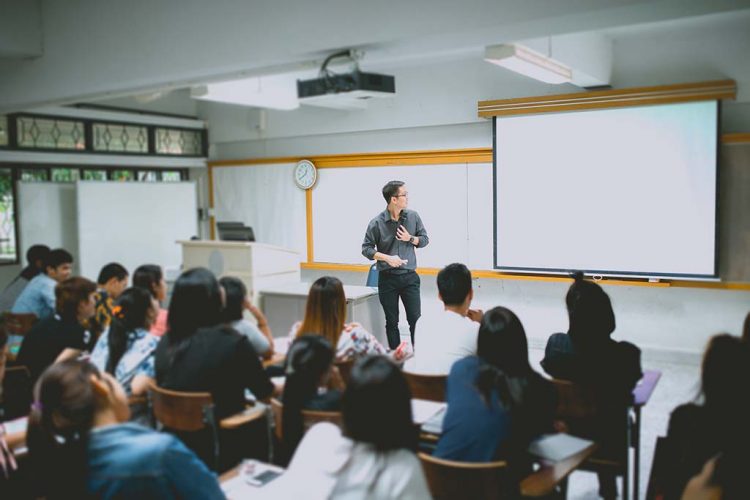Affordable Primary Science Tuition Singapore for All Learning Needs
Affordable Primary Science Tuition Singapore for All Learning Needs
Blog Article
A Comprehensive Overview to the Various Learning Approaches in Primary Scientific Research Guideline
The expedition of varied learning techniques in key science direction offers a possibility for educators to improve student engagement and understanding considerably. By examining hands-on learning strategies, inquiry-based techniques, and joint approaches, we can determine reliable methods that provide to various discovering designs.

Hands-On Understanding Techniques
Hands-on knowing methods play an essential duty in primary science direction, engaging trainees in active exploration and testing. These techniques enable students to communicate straight with phenomena and materials, fostering a deeper understanding of clinical principles. By making use of manipulatives, versions, and real-life experiments, instructors develop a setting where trainees can observe, hypothesize, and evaluate their concepts.
Such methods not just boost understanding yet likewise cultivate vital thinking and problem-solving skills. When pupils take part in tasks like constructing basic devices, planting seeds, or performing chemical responses, they are encouraged to ask questions and look for responses with their very own monitorings. This experiential method helps to debunk complicated clinical concepts, making them more relatable and accessible.
In addition, hands-on discovering promotes cooperation among peers, as pupils commonly operate in teams to carry out experiments or share searchings for. This team effort not just enhances their learning experience however also creates necessary social skills. Eventually, integrating hands-on methods in primary science instruction promotes a long-lasting love of knowing and curiosity concerning the natural globe, laying a strong foundation for future scholastic pursuits in scientific research and past.
Inquiry-Based Knowing
Inquiry-based discovering is an educational approach that motivates pupils to ask concerns, explore phenomena, and build their very own understanding of scientific principles. This method moves the emphasis from traditional teacher-led direction to an extra student-centered experience, where students take the initiative in their instructional trip. By cultivating curiosity, inquiry-based discovering advertises much deeper involvement with the material, allowing trainees to discover subjects in a purposeful context.
In practice, this method commonly entails hands-on experiments, observations, and vital thinking activities that line up very closely with the scientific approach. Pupils are encouraged to create theories, layout examinations, and analyze data, which grows important skills such as analytical and problem-solving reasoning. The duty of the instructor in this structure is to promote expedition, directing trainees through the inquiry procedure while urging independent idea and partnership.
Additionally, inquiry-based knowing nurtures a feeling of possession over the discovering process, encouraging trainees to pursue knowledge proactively. This technique not only improves understanding of clinical ideas however also cultivates a lifelong love for knowing, equipping pupils with the skills required to browse a significantly complicated world.
Collaborative Understanding Approaches
Collaborative discovering methods encourage pupils to take part in significant communications with peers, cultivating a shared responsibility for their academic end results. In key scientific research instruction, these methods urge students to collaborate to explore scientific ideas, fix troubles, and perform experiments (primary science tuition Singapore). By Your Domain Name taking part in team tasks, pupils can utilize varied perspectives, allowing for richer understanding and retention of scientific knowledge
One secret facet of joint understanding is the focus on interaction abilities. Trainees should verbalize their thoughts, listen proactively to others, and bargain concepts, every one of which are important expertises in both scholastic and real-world contexts. This social interaction not only enhances their understanding of clinical concepts yet additionally promotes teamwork and conflict resolution abilities.
When pupils see the value of their payments within a group, they are a lot more most likely to take ownership of their discovering journey. Generally, incorporating joint learning techniques in key science direction grows a dynamic knowing setting that prepares pupils for future academic and social obstacles.
Technology Integration in Scientific Research
The assimilation of technology in main scientific research guideline boosts learning experiences by offering ingenious devices and sources that sustain numerous training methodologies, including collective learning - primary science tuition Singapore. Using digital platforms, simulations, and interactive applications enables trainees to engage deeply with scientific ideas, promoting an extra hands-on strategy to understanding
Digital laboratories, for instance, enable students to perform experiments securely and successfully, advertising inquiry-based discovering. These tools can mimic real-world scientific scenarios, allowing students to envision intricate procedures that would be challenging to replicate in a traditional class setting. Innovation cultivates interaction and partnership amongst pupils, as they can share searchings for and function with each other on jobs via online platforms.
In addition, multimedia discussions and instructional videos can enrich lessons by satisfying varied discovering styles, making abstract principles more description obtainable. Information analysis devices also encourage students to gather and translate scientific data, strengthening essential thinking abilities. Generally, the strategic unification of technology in key scientific research guideline not just improves involvement however additionally prepares pupils for a technically innovative culture, outfitting them with crucial abilities for future clinical undertakings.
Differentiated Instruction Techniques
Distinguished guideline approaches are essential for addressing the diverse needs of students in main science education and learning. These methods enable teachers to customize their teaching methods to suit differing capabilities, rate of interests, and learning styles within the classroom. By using set apart instruction, teachers can develop an inclusive atmosphere that fosters interaction and improves understanding of clinical concepts.
One effective approach is to utilize versatile grouping, which permits trainees to work together with peers at comparable ability degrees or with varying point of views. This approach encourages peer learning and promotes crucial thinking. Furthermore, offering options in assignments can empower pupils, allowing them to choose projects that resonate with their interests while still meeting curricular purposes.
In addition, including tiered jobs is another valuable technique. Deliberately tasks with varying degrees of intricacy, teachers can ensure that all students are appropriately tested, regardless of their proficiency. Utilizing developmental evaluations to determine recognizing additional makes it possible for instructors to readjust their training techniques dynamically, making sure that each learner receives the assistance they require.
Eventually, implementing differentiated direction strategies in key science education and learning not just improves pupil understanding results but likewise grows an enthusiasm for scientific research, preparing pupils for future academic quests.

Final Thought
In recap, reliable key scientific research direction demands a complex strategy that includes hands-on discovering, inquiry-based techniques, and collective strategies. The integration of innovation and differentiated instruction even more caters to varied understanding designs, promoting a setting favorable to exploration and essential thinking.
The expedition of varied learning techniques in key science direction offers a possibility for educators to enhance student involvement and comprehension considerably.Hands-on learning techniques play a crucial function in primary science direction, involving students in energetic exploration and trial and error.Inquiry-based learning is an educational strategy that urges students to ask concerns, investigate sensations, and build their very own understanding of Read Full Report scientific concepts.Collaborative learning methods encourage trainees to engage in meaningful communications with peers, cultivating a shared duty for their academic end results. In general, integrating collaborative understanding approaches in main scientific research direction grows a vibrant discovering environment that prepares pupils for future academic and social obstacles.
Report this page